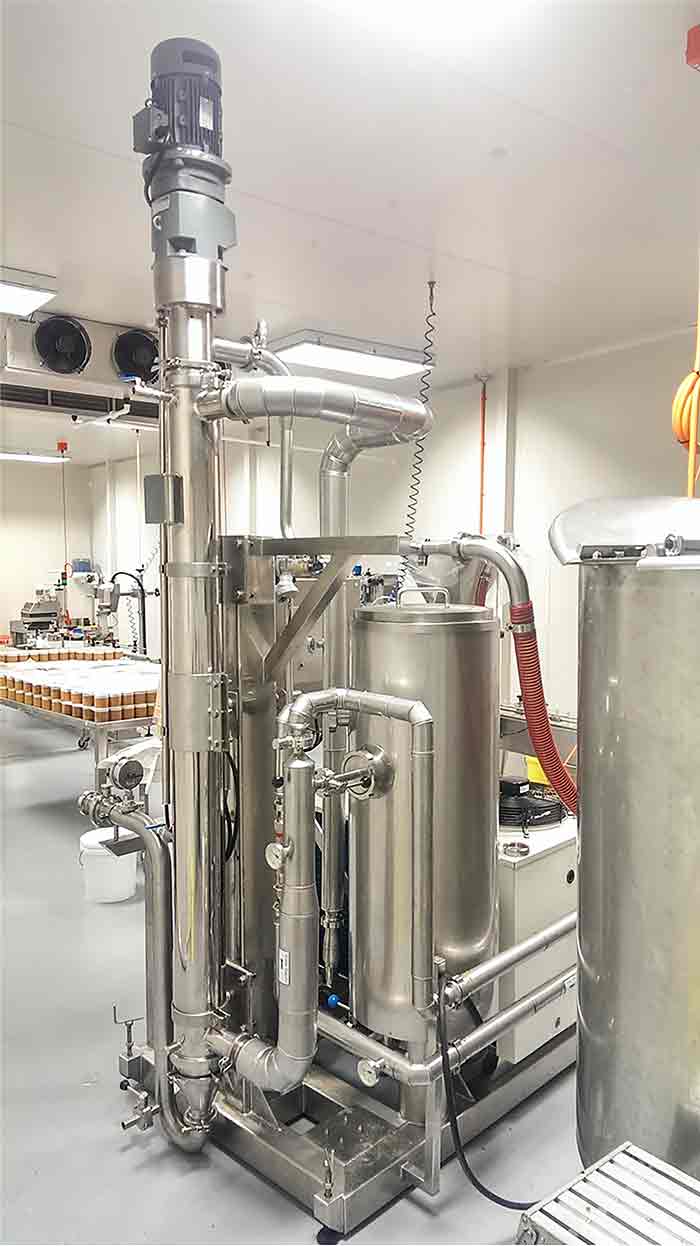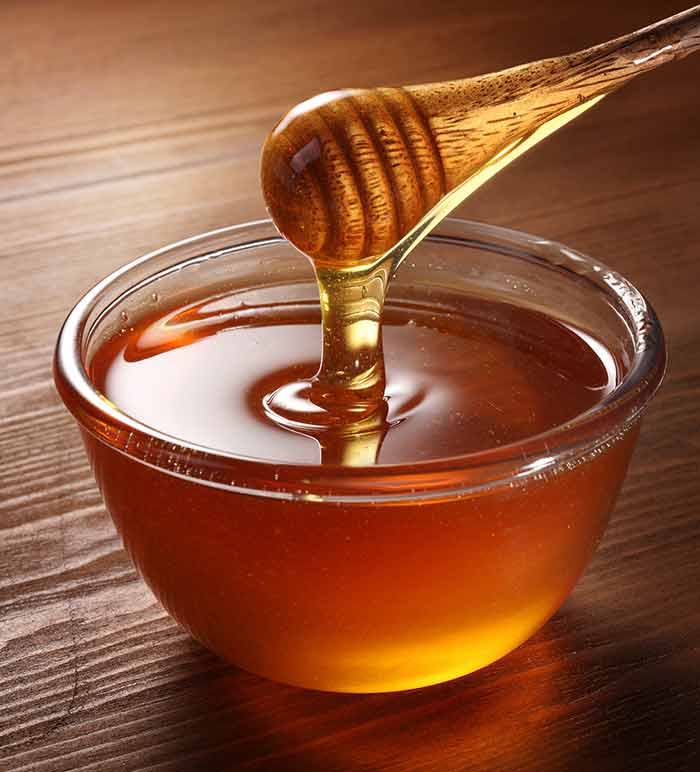When processing any kind of remotely viscous food product, it is inevitable that a certain amount will adhere to surfaces, such as the inside of vessels and pipe work, or get left in equipment after processing. The potential value of this lost product can soon add up, especially when handling large quantities of viscous, valuable products such as honey, syrups and purées.
Globally, an estimated 30 percent of the food produced for human consumption is lost or wasted somewhere in the supply chain.1 Approximately 185 million tons of food is lost and wasted in North America each year. Of this, some 57 million tons are lost in the U.S. between harvest and the consumer.2 At a time when all forms of food waste are under increasing scrutiny, it is important that all parts of the food chain are as efficient as possible.
 Image 1. This tube-in-tube heat exchanger uses a reversible screw to recover product without damaging the goods. (Images courtesy of HRS Heat Exchangers)
Image 1. This tube-in-tube heat exchanger uses a reversible screw to recover product without damaging the goods. (Images courtesy of HRS Heat Exchangers)The good news is that the processing and packaging part of the food chain is already the most efficient, accounting for just 4 percent of overall food losses in the U.S., according to the United Nations Food and Agriculture Organization (FAO).3 However, there is always room for improvement, and management processes and equipment design are the two biggest tools food manufacturers have the ability to optimize. Many manufacturers are already adopting efficiency best practices. For example, since 2009 PepsiCo has reduced food losses at its sites in the U.K. by 20 percent as part of a wider initiative.4
Two Ways to Minimize Losses
There are two ways of minimizing such losses in equipment and in an ideal situation they will be used in combination. The first involves designing equipment, such as tubular heat exchangers, which prevent product from adhering to the surface in the first place and will help keep it flowing through the system.
The second aspect is the use of dedicated systems to clean and recover product from equipment after processing and before full cleaning occurs. Many modern heat exchangers are designed to handle viscous fluids without fouling. Some use corrugated tube designs, while others in more demanding situations use scrapers to continually remove residues from the surface of the tubes before they build up. These heat exchangers can be used for numerous processes, including heating and cooling, cooking, concentrating, pasteurizing and sterilizing.
 Image 2. The right heat exchanger choice can save money when processing high-value viscous products such as honey.
Image 2. The right heat exchanger choice can save money when processing high-value viscous products such as honey.This self-cleaning provides two advantages. First, as the foodstuff being treated is kept moving and does not adhere to the tube surface, losses during processing are minimized. Second, because a fouling layer is not built up, the optimal thermal performance of the heat exchanger is maintained increasing process efficiency and reducing energy use or treatment times.
CIP & Flushing Product Through
No matter how good your equipment is at preventing product buildup, there will come a time when cleaning, usually in the form of cleaning-in-place (CIP), needs to be carried out. Depending on the products handled and product complexity, this may be required several times a day between batches. If product remaining in equipment is flushed through as part of cleaning procedures, then hundreds of thousands of pounds of product could be lost each year.
Traditionally the problem has been overcome by the use of pigging systems to physically push product through key parts of the system or to use water or air to flush product through. These methods have certain disadvantages, including added complexity and the potential to dilute or contaminate products.
Another option is to use a heat exchanger, which is capable of emptying itself of product before the cleaning cycle commences, for example by choosing a range of scraped surface heat exchangers that can be run in reverse.
A rotating scraped-surface heat exchanger, which contains a scraper bar within each inner tube to enhance product flow, prevent fouling and minimize pressure drop, is ideal.
Depending on how they are designed, some scraped surface heat exchangers can be adapted accordingly, such as those where the scraper bar features a helical screw that rotates at high speed.
When configured correctly, this screw can be run in reverse, effectively emptying the heat exchanger tubes of product without damaging it or changing its characteristics.
This system is particularly suitable for high-value viscous products such as honey, treacle (molasses), custards and creams, where any losses of product can be economically important. The heat exchanger can be emptied of the majority of product without the need for any additional pumps or pressure systems. This provides advantages in terms of both capital and running costs.
For maximum flexibility, users should choose a unit that can be configured for both horizontal and vertical operation, so that gravity can also be used to help recover product from the tubes. This should still allow the possibility of combining multiple units for larger capacity installations.
Due to the amount of product saved, and that it is often unnecessary to install additional product recovery systems, the use of this type of heat exchanger can pay for itself.
Future Automation
The shift in industry toward autonomous production systems that are controlled and monitored by computer-based algorithms presents an opportunity to take product recovery to the next level. Installing a system that automatically diverts residual product when it no longer meets specification can reduce waste and improve cleaning processes.
Adding an inline instrument to measure changes in the physical or chemical properties of the product, such as concentration, adds an additional level of control to the process.
The monitoring information can relate to any suitable physical or chemical property, such as Brix (the sugar content of an aqueous solution), pH, viscosity or density—depending on the nature of the product and the sensors that are available. The information from the sensor(s) is passed to a controller that determines whether to keep or discard that material based on predetermined quality parameters.
It then works in conjunction with the heat exchanger and additional diversion valves to empty in-specification product or send it for further processing, while anything that is outside the specified parameters is rejected.
Recovering usable product helps the bottom line by increasing output, and it also reduces waste treatment and disposal costs—something that is good for both the business and the planet.
References
1. Global Initiative on Food Loss and Waste Reduction (2015); Food and Agriculture Organization of the United Nations
2. Food Loss and Waste in North America; Commission for Environmental Cooperation
3. Reducing Food Loss and Waste. World Resources Institute Working Paper; United Nations Environment Programme
4. Avoid Loss During Processing; FoodDrink Europe

